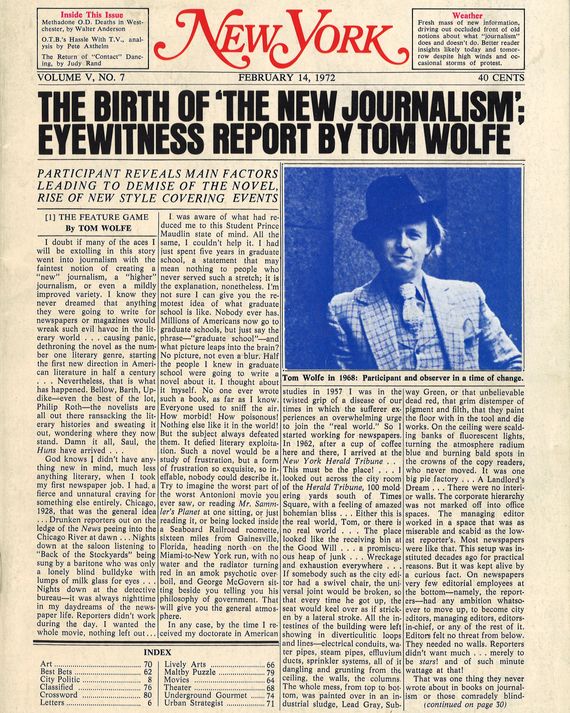The Greatest Guide To News Articles
Table of ContentsSome Known Questions About News Articles.Our News Articles DiariesNews Articles - The FactsRumored Buzz on News ArticlesTop Guidelines Of News Articles
Excellent expertise of different topics provides trainees a competitive side over their peers. Despite the fact that electronic and social media are conveniently easily accessible, we should not forget exactly how important it is to read the newspapers. Parents need to attempt and inculcate the habit of checking out a paper as a daily regimen to continue the tradition of the adored print medium.Information stories also consist of at the very least one of the following essential features loved one to the intended audience: proximity, prominence, timeliness, human passion, oddity, or consequence.
Within these limitations, information stories also aim to be extensive. Nevertheless, various other variables are involved, some stylistic and some stemmed from the media kind. Among the larger and much more recognized papers, justness and balance is a significant consider offering information. Discourse is generally constrained to a different area, though each paper may have a different general slant.
Newspapers with a worldwide audience, for instance, have a tendency to utilize a more official design of writing. The certain options made by a news electrical outlet's editor or content board are commonly gathered in a design overview; typical design overviews consist of the and the US Information Design Publication. The primary goals of information writing can be summarized by the ABCs of journalism: accuracy, brevity, and quality.
The Facts About News Articles Uncovered
As a guideline, journalists will certainly not utilize a lengthy word when a brief one will do. News writers attempt to prevent using the exact same word more than when in a paragraph (often called an "resemble" or "word mirror").
Headings in some cases omit the topic (e.g., "Leaps From Boat, Catches in Wheel") or verb (e.g., "Feline lady fortunate"). A subhead (additionally subhed, sub-headline, subheading, caption, deck or dek) can be either a subservient title under the primary headline, or the heading of a subsection of the short article. It is a heading that comes before the main text, or a group of paragraphs of the major text.

of a short article topic, source, or interviewee), it is described as a drawn quote or draw quote. Extra signboards of any of these types might show up later on in the post (specifically on subsequent pages) to lure further analysis. Journalistic websites often utilize animation techniques to swap one billboard for an additional (e.g.
News Articles Fundamentals Explained
Such signboards are also utilized as tips to the article in various other areas of the magazine or site, or as promotions for the piece in other publication or websites. Press release of the Swiss federal government. Typical framework with title, lead paragraph (summary in bold), various other paragraphs (details) and contact info.

Instance of a hard-lead paragraph NASA is recommending one more area project. The agency's spending plan demand, revealed today, consisted of a plan to send out another goal to the Moon. This time around the company intends to develop a lasting center as a jumping-off place for various other area adventures. The spending plan requests roughly $10 billion for the project.
An "off-lead" is the 2nd most important front page news of the day. To "hide the lead" is to start the write-up with history info or information of second significance to the viewers, forcing them to review even more deeply into a post than they must have to in order to discover the vital factors.
The 5-Minute Rule for News Articles
Common usage is that or two sentences each form their own paragraph. Journalists normally explain the organization or framework of a newspaper article as an upside down pyramid. The crucial and most interesting elements of a tale are put at the beginning, with supporting details following in order of reducing relevance.
It allows people to discover a subject to just the deepness that their inquisitiveness takes them, and without the charge of information or subtleties that they could take into consideration pointless, yet still making that information readily available to a lot more interested viewers. The upside down pyramid structure also enables short articles to be trimmed to any arbitrary size during format, to fit in the room available.
Some authors begin their stories with the "1-2-3 lead", yet there are several kinds of lead offered. A kicker can refer to multiple points: The last story in the information program; a "delighted" tale to end the program.
Longer posts, such as magazine cover articles and the pieces that lead the inside areas of a newspaper, are recognized as. Feature tales differ from straight news in several ways.
The Buzz on News Articles
The journalist frequently details communications with meeting topics, making the piece extra personal. A feature's very first paragraphs often associate a fascinating minute or occasion, as in an "unscientific lead". From the particulars of a person or episode, its view quickly expands to generalities about the story's topic. The area that signifies what an attribute has to do with is called the or signboard.

The Editor's Tool kit: A Referral read the full info here Guide for Beginners and Professionals (2001) Allan M. Siegal and William G. Connolly. The New York Times Guidebook of Style and blog here Use: The Official Style Overview Made Use Of by the Writers and Editors of the World's The majority of Authoritative Paper (2002) M. L. Stein, Susan Paterno, and R.